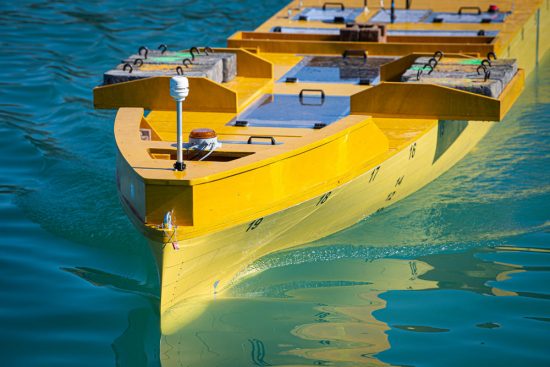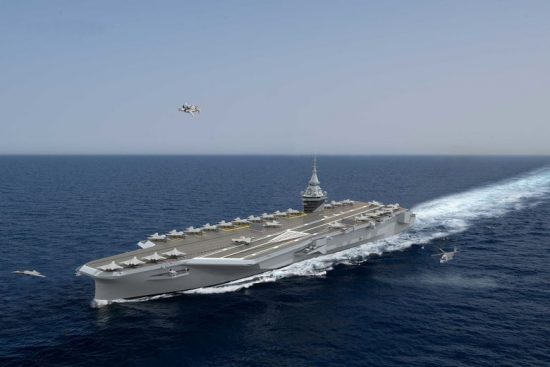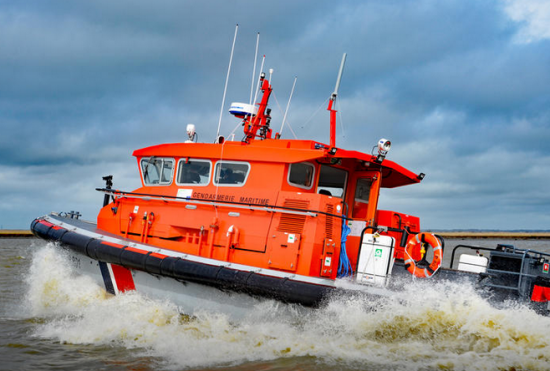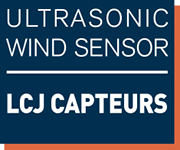18 Jun The CV3F on the model of the new DGA aircraft carrier!
In recent days, we could notice the release of a funny “miniature” ship. It is simply the model of an aircraft carrier. The tests are carried out by the DGA (Directorate General of Armaments) for the future aircraft carrier of the French Navy. The model is 10 meters long, which represents 1/30th of the real aircraft carrier. A CV3F ultrasonic wind sensor equips the aircraft carrier model.

What is the DGA’s plan with this model?

Thanks to a Facebook video from La Provence Alpes, we were able to see sailing on the lake of Castillon, in the Alpes de Haute Provence (french region), the model of the future aircraft carrier. Indeed, the choice of the place is not insignificant because it becomes a training ground for the future ship of the French Navy. Sailing on this lake allows acoustic studies to be carried out. Thus, the engineers have the possibility to better spot the problems in view of the low background noise of the lake.
In addition, this allows the 3 ton aircraft carrier model to perform maneuverability tests on the lake. These tests are important because the main mission of the aircraft carrier is to launch aircraft. Its role is to facilitate take-offs and landings of fighter aircraft. The orientation of the aircraft carrier is important, especially in relation to the wind.
Indeed, the maneuver of tacking to be in front or against the wind produces heel. For this, the heel of the ship will be studied so that it is as low as possible. The purpose of this study is to keep the flight deck as straight as possible in relation to the sea. For this reason, on this model, we can find the ultrasonic wind sensor CV3F.
What are the features of the model of the future aircraft carrier?
If the aircraft have not been reproduced on the model, the reproduction conditions are almost real for the implementation of the simulation. At 10 meters long, the PA-NG model has the same functions as the successor to the Charles de Gaulle :
-
- An electric propulsion engine,
- An on-board computer connected by wifi to the follower ship, with a command control to maneuver it remotely,
- Actuators for the rudder,
- Two pairs of stabilizing fins,
- Measurement sensors including our CV3F ultrasonic windvane-anemometer
.
PA-NG: the future French aircraft carrier!
If its design is not yet definitive, neither is its name. For the moment, the project that will succeed the Charles de Gaulle is called “PA-NG”, a simple abbreviation of “Porte-avions Nouvelle Génération”.

The PA-NG, the strategic ship par excellence.
This future steel giant will be equipped with two nuclear-powered engines. It is 50% more powerful than the current aircraft carrier, which allows it to maintain a top speed of 27 knots or 50 km/h. The PA-NG will be 305 meters long and nearly 80 meters wide for the flight deck, including 39 meters of waterline. It will weigh 75,000 metric tons, more than 33,000 tons more than the current Charles de Gaulle aircraft carrier.
The PA-NG will be able to accommodate a crew of about 1,000 sailors, excluding staff and the carrier battle group. The current aircraft carrier accommodates 1,200 sailors. Even if the future PA-NG is larger, the sailors will be housed in quarters where there will be 4 to 8 people per station. In contrast, the Charles de Gaulle accommodates 10 to 40 men per station. This new configuration is conducive to comfort and to limiting the promiscuity that would slow down volunteers from enlisting. It also reduces the potential rapid spread of an epidemic. Indeed, the most telling example is that in April 2020 with Covid-19 on board the Charles de Gaulle.
The PA-NG will have a capacity of :
- 30 fighter aircraft,
- 6 helicopters,
- 3 warplanes.
The PA-NG: when is it going to happen?
Under study since 2018, construction should begin in 2025 at the Chantiers de l’Atlantique in Saint-Nazaire. It is the only shipyard in France capable of building a ship of such a large tonnage. In 2038, the PA-NG will replace the current aircraft carrier Charles de Gaulle.
The cost has been estimated at 225 million euros per year for 20 years, for a total of 4.5 billion. This long-term investment includes design, construction and equipment.
LCJ Capteurs : equipment supplier to the French Navy?
At present, LCJ Capteurs has the opportunity to equip small units of the French Navy. Indeed, the Gendarmerie Maritime and the French Navy benefit from the performance of the CV3F static ultrasonic wind sensor on their VSMPs, VEHs and tugs. Moreover, French maritime security is not the only one concerned. Moroccan safety boats, for example, are also equipped with CV3F ultrasonic wind vane-anemometers.
We have no shortage of interest in equipping larger vessels with our ultrasonic wind sensors.

